
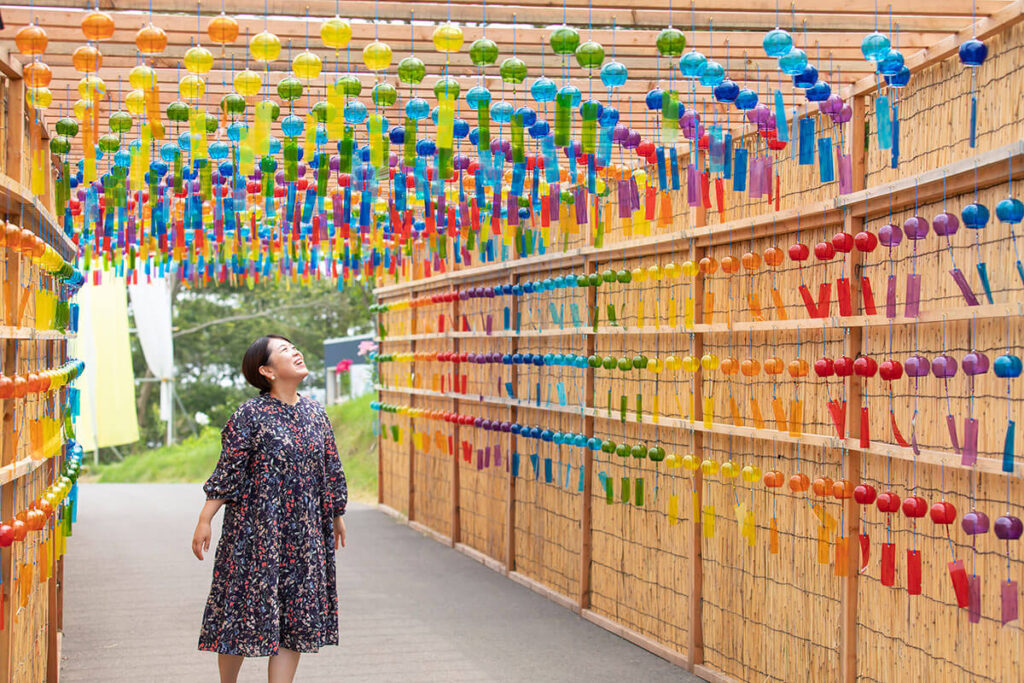

Biwako Hakodateyama, one of the largest resort parks in the Kansai region, is being held at the Hakodateyama ski resort in Takashima, northwestern Shiga Prefecture, until Sunday, November 15.
(*As of 11/16. The event was originally scheduled to run until 11/23, but the opening hours were shortened and the event was closed for this year)
Last year, WebLeaf's article introducing LAMP, a parfait specialty restaurant in the park, was a great success. This year, we heard that the outdoor area has been enhanced with the addition of new spots such as "Fu-ring-no-Yoshi Path" and "Petunia Field," so we immediately went to visit.
From Kyoto City, it takes about 70 minutes by car or about 60 minutes by train + bus to reach the Hakodateyama Gondola. After enjoying an 8-minute gondola ride to an altitude of 680 meters with a view of Lake Oku-Biwako, you will arrive at "Biwako Hakodateyama". The clear air, clearly different from that in the city of Kyoto, made me take a deep breath.
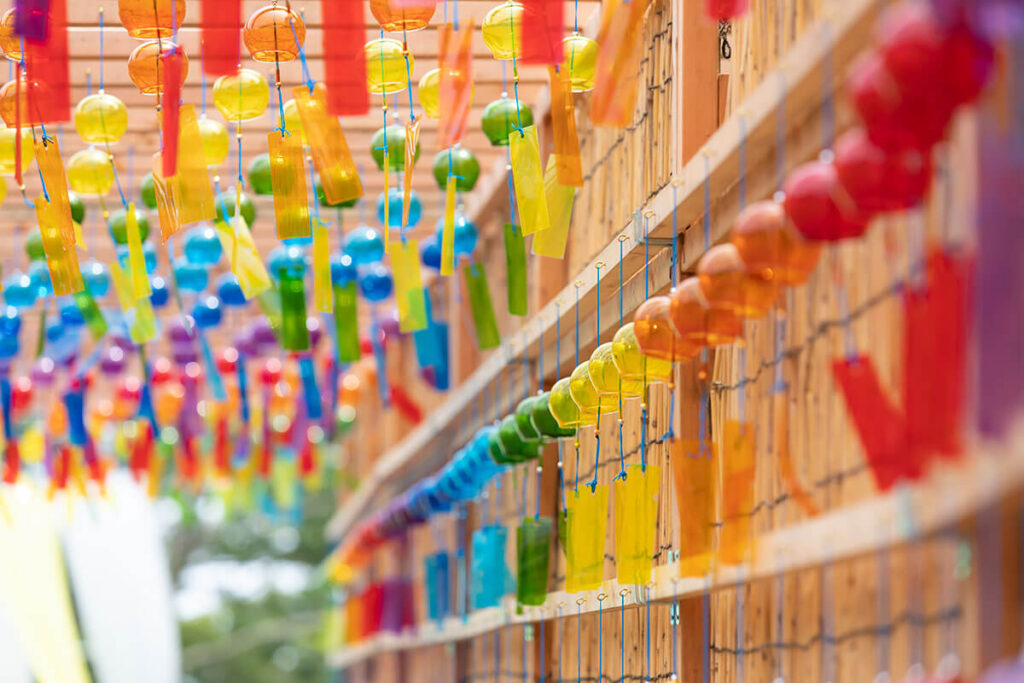
A new spot, "Fu-ring-no-Yoshi Path," was introduced this year. Colorful wind chimes flutter in the wind.

First, head to a new spot, "Fu-ring no yoshi pathway. On the pathway lined with tassels made of Lake Biwa reeds, brightly colored wind chimes clang and clang. The wind chimes are a collaboration with the adjacent Kurokabe Glass Museum in Nagahama City. Takashima City, where Biwako Hakodateyama is located, has a unique weather called "Takashima Shigure," which is said to cause rainbows to appear easily when light shines in after the rain. The "Yoshinoyoshi Path of Wind Bells" was a symbol of "Takashima, a city of rainbows.
882 wind chimes, each one dyed by hand in seven different colors
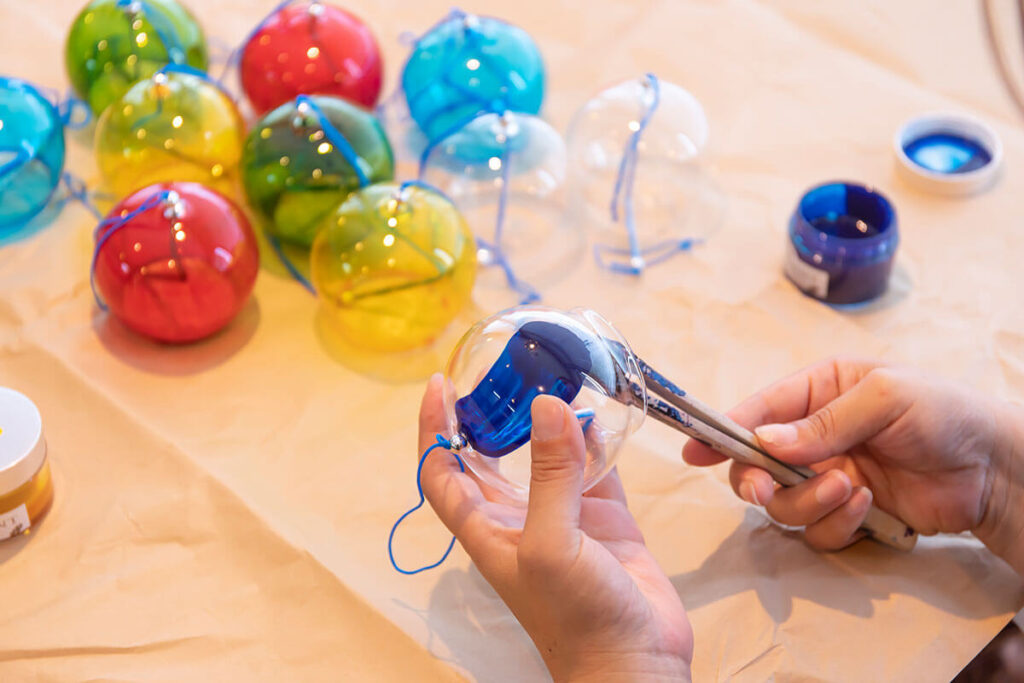
Each glass wind chime is dyed by hand from the inside.

The seven-colored wind chimes, which sparkle in the sunlight, are colored by hand, one by one, by the staff of "Biwako Hakodateyama. They dye 882 of them with water-based glass paint while maintaining the vivid colors so as not to spoil the translucent coolness of the glass. Among the seven colors, purple was originally not available in the paint, and they managed to combine the paints to create an exquisite hue.
The entire painting process, including the tanzaku, takes about one week. The sound of the wind chimes differs depending on whether they are hand-painted or not. After learning about the careful process by the staff members, I felt so lovely about the wind chimes that it was as if they were playing music. At the second hutte in the park, visitors can purchase glass crafts from the Kurokabe Glass Museum as souvenirs, so be sure to check it out as well.
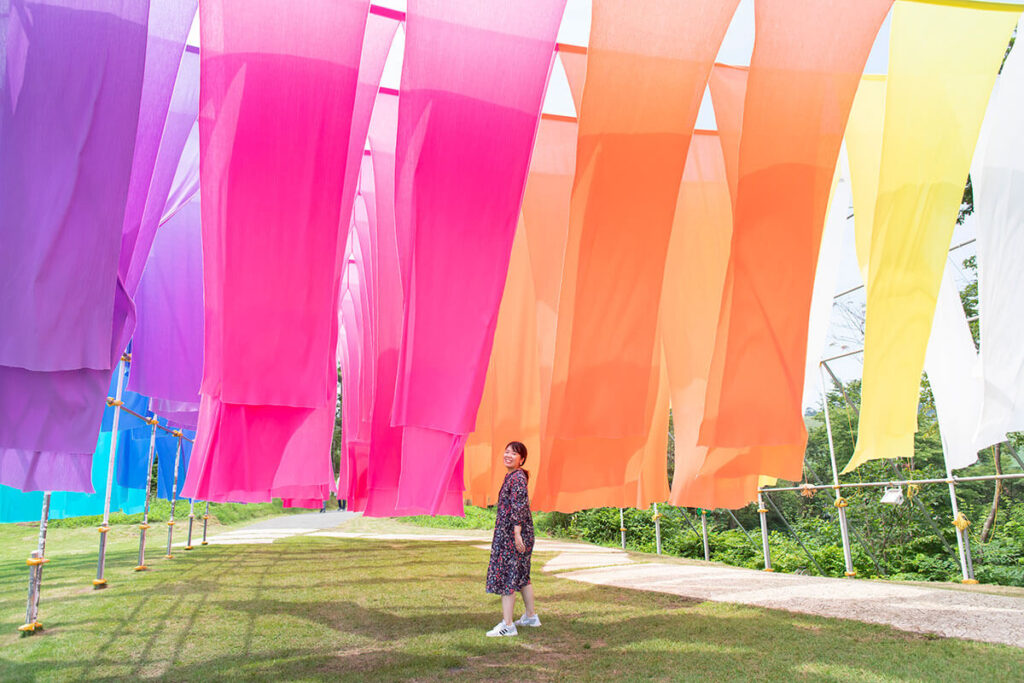
Rainbow Curtain" using Takashima chijimi, a local specialty

After passing through "Fu-ring no yoshi path" is the "Rainbow Curtain," made of Takashima chijima, a specialty of Takashima City. The sight of 200 curtains, each 4 meters long, swaying every time the wind blows is a sight to behold. Chijimi is a textile in which the threads are strongly twisted to create an uneven surface. It has been used for underwear, pajamas, and pants because it has a small surface area that touches the skin and has excellent moisture absorbency. Takashima City is blessed with clear water flowing into Lake Biwa, and the shrink-woven industry has flourished since the Edo period. 90% of cotton chijimi fabrics are still made in the city today. It is amazing that a traditional industrial product can become such a powerful work of art!
Recommended hours for "Hill with a view of Lake Biwa" are from 11:00 a.m. to 1:00 p.m.
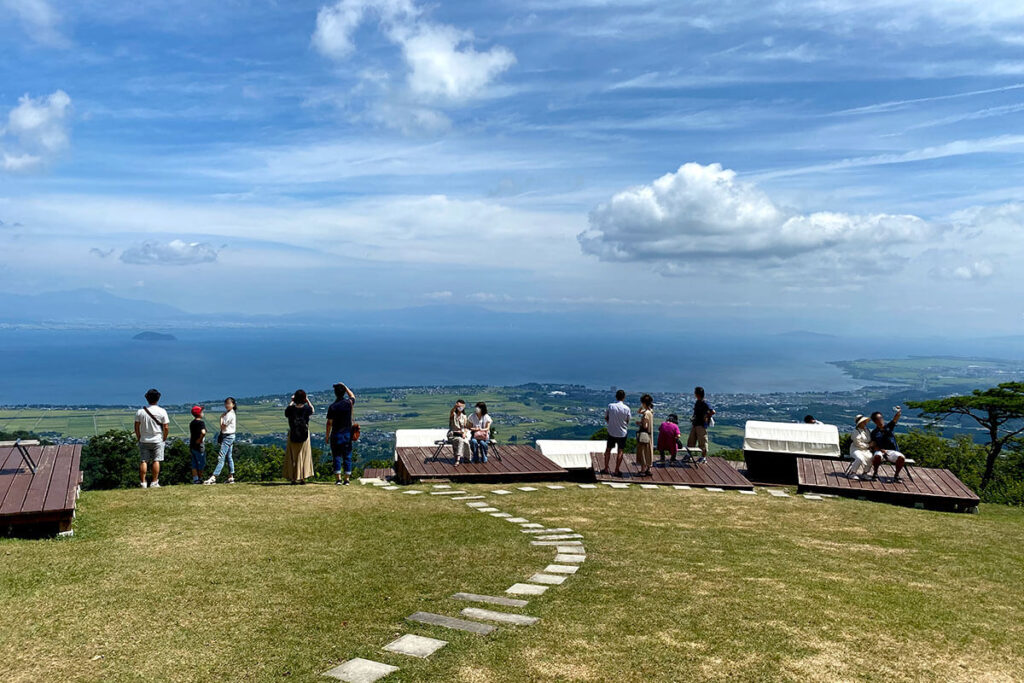
Take a rest on a bench at "Lake Biwa View Hill.

Once you pass through the "rainbow curtain," you will be rewarded with a spectacular view overlooking Lake Biwa, Mt. Ibuki, and Chikubu Island." It is recommended to visit between 11am and 1pm because of the haze caused by the "Takashima Shigure". Taking a break while listening to birds chirping, wind chimes, and rainbow curtains fluttering, I was able to fully refresh myself and release my daily stress. Nearby, there are drinks with a motif of blue like Lake Biwa for sale, so why not enjoy them together?
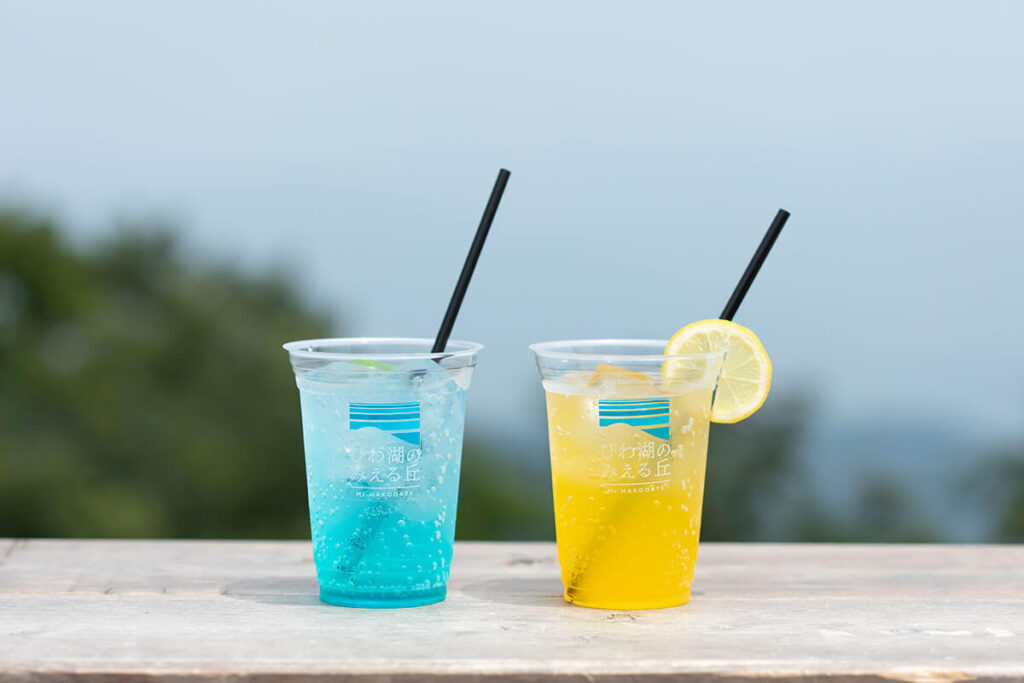
(From left to right) Biwako no Mieru Oka Tonic Soda 500 yen, Sunrise Tonic Soda 500 yen *All prices include tax.

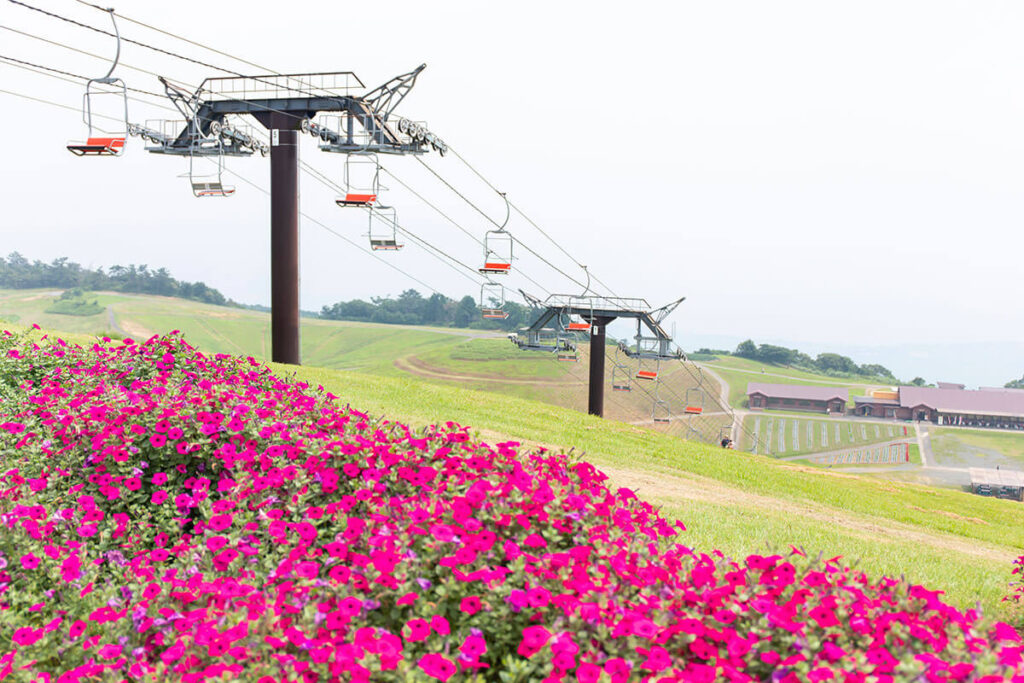
Take the lift to the top of the mountain where the "Petunia Field" is located.

The last stop was the newly planted "petunia field. Until last year, they had planted lilies, but they have replaced them with petunias, which are more resistant to weather changes, so that visitors can enjoy the beauty of the flowers at any time of the year. Petunias are at their best from April to October, and kochia, which turns red in early October, is also at its best. It is nice to have an abundance of plants throughout the season.
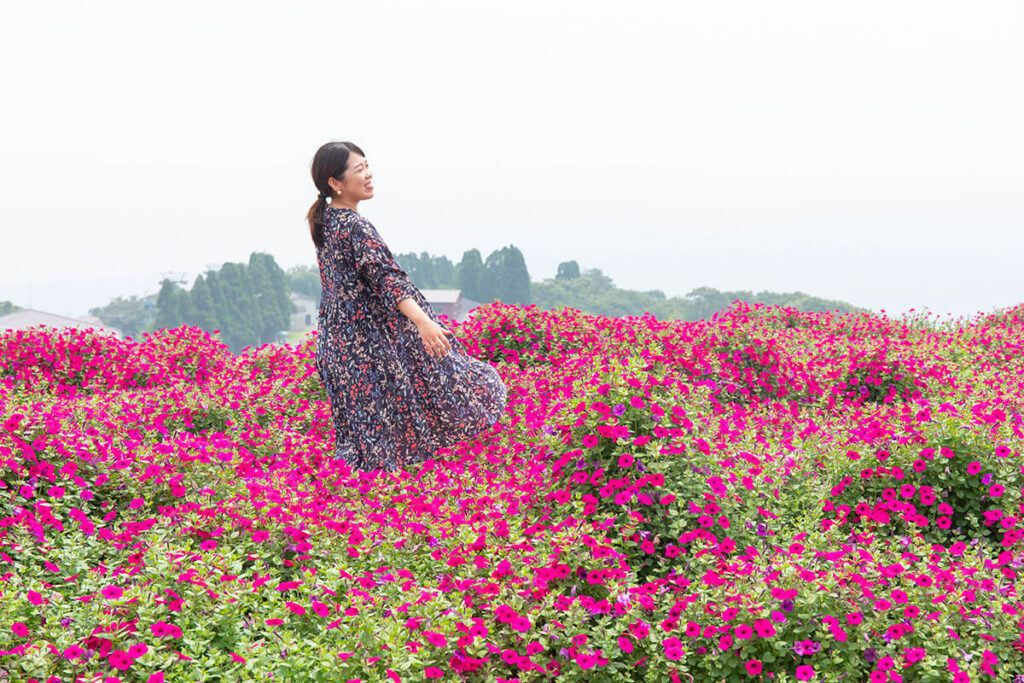
On a clear day, the contrast with the blue sky is spectacular.

The cheerful petunias, blooming in pink, look great against the green of Hakodate Mountain, the sky, and the blue of Lake Biwa. In addition to the rainbow curtain and the wind chime yoshi pathway, this is another WebLeaf-recommended photo spot.
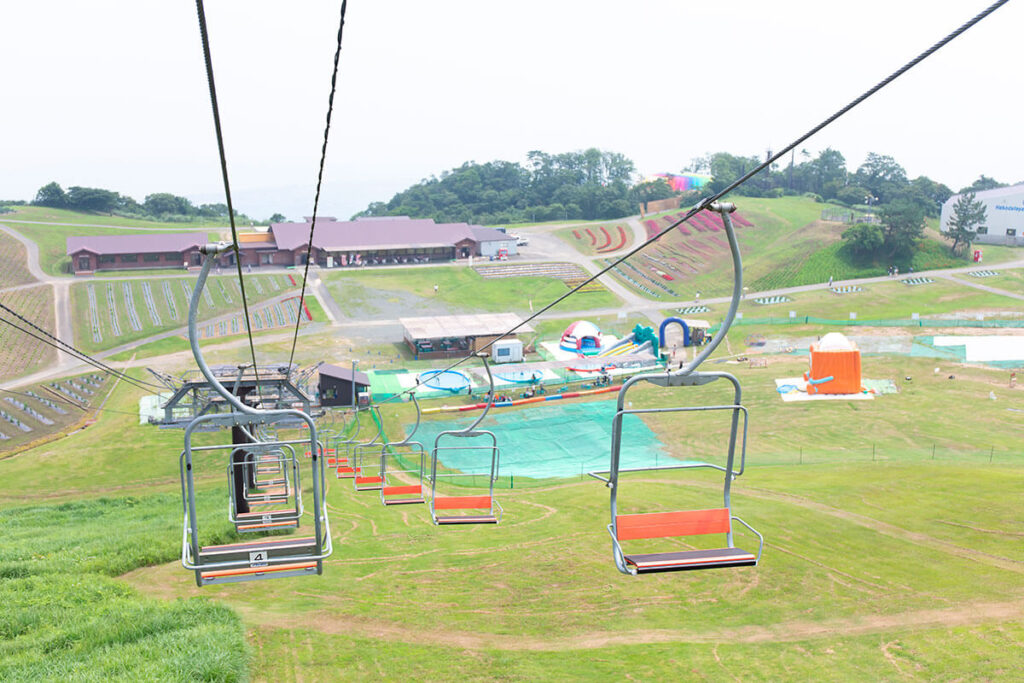
From the lift, you can see the entire park and enjoy an open view.

Biwako Hakodateyama, which has more attractions than last year. As befits a place known as Takashima, the city of rainbows, there were many colorful spots and nature-filled scenery, offering spectacular views not found in Kyoto. This year, more than ever before, many people are looking for a place to enjoy the outdoors, and this is exactly what we recommend. Be sure to look out for events such as [parfait specialty restaurant LAMP], where you can enjoy stylish parfaits in a mountain hut-inspired restaurant, and the "Hakodateyama Night Gondola" on full-moon nights.
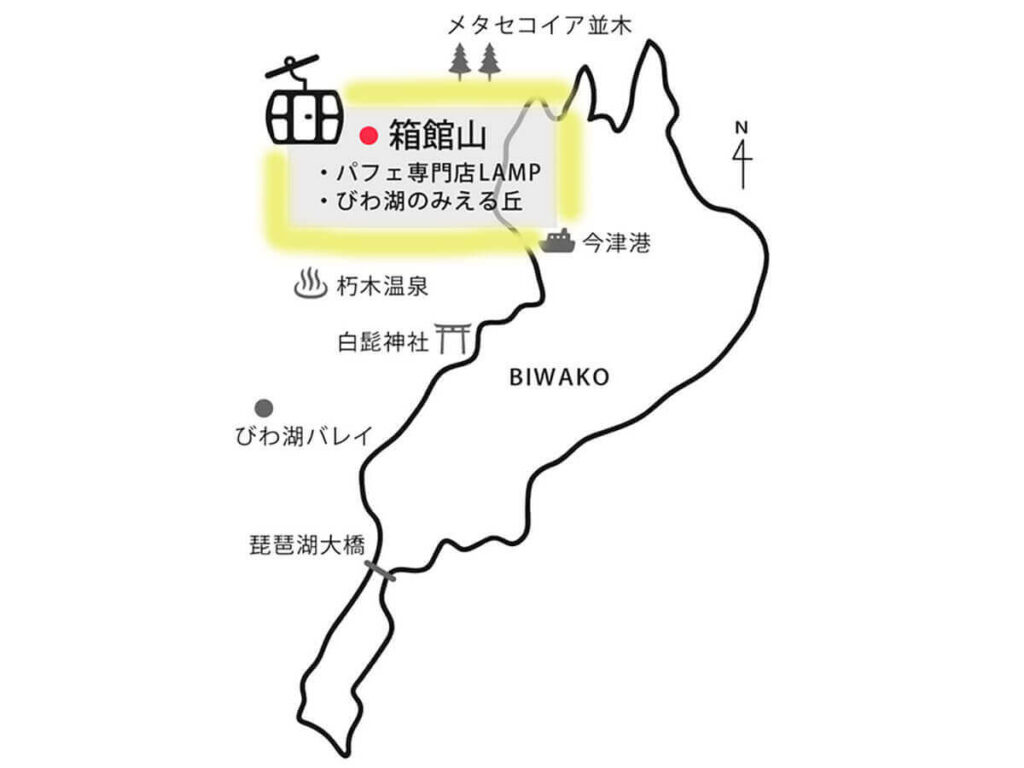

Biwako Hakodateyama
Dates / Saturday, July 18 - Sunday, September 6, 2020 and Saturday, September 12 - Monday, November 23, 2020 15 (Sun.) (*As of 11/16. (The event was originally scheduled to run until November 23, but the opening hours were shortened and the event was closed this year.)
Opening hours/9:00-17:00
Hakodateyama is accessed via a connecting gondola. The gondola starts operating at 9:00 a.m., the last gondola to ascend is at 4:30 p.m., and the last gondola to descend is at 5:00 p.m.
Admission (including round-trip gondola): Adults 2,000 yen, elementary school students and younger 1,000 yen, children under 3 free, pets 600 yen
Parking for 1,100 vehicles (passenger cars: 500 yen, buses: 1,000 yen, motorcycles: 300 yen, mopeds and bicycles: free)
Hakodateyama Night Gondola
September 2 (Wed) - 4 (Fri), October 1 (Thu) - 3 (Sat), October 31 (Sat) and November 1 (Sun), 2020
Gondola operating hours: 9:00 - 20:00 (last gondola uphill: 19:30, last gondola downhill: 20:00 *)
September 2 (Wed.) - 4 (Fri.): 9:00 - 20:30 (last stop on the way up: 20:00, last stop on the way down: 20:30)
Over 600 interviews per year! An order site carefully selected by the editors who knows Kyoto and Shiga.
nowOfficial LINE friend registration500 yen OFF coupon is being issued!
Distributed every Friday morning at 8:00 am! From new restaurant information to event information that we want to share with you, We deliver articles about Kyoto that are useful to know. About 20,000 people have registered.Click here to add a friend!
 News
News Feature article
Feature article Featured event
Featured event